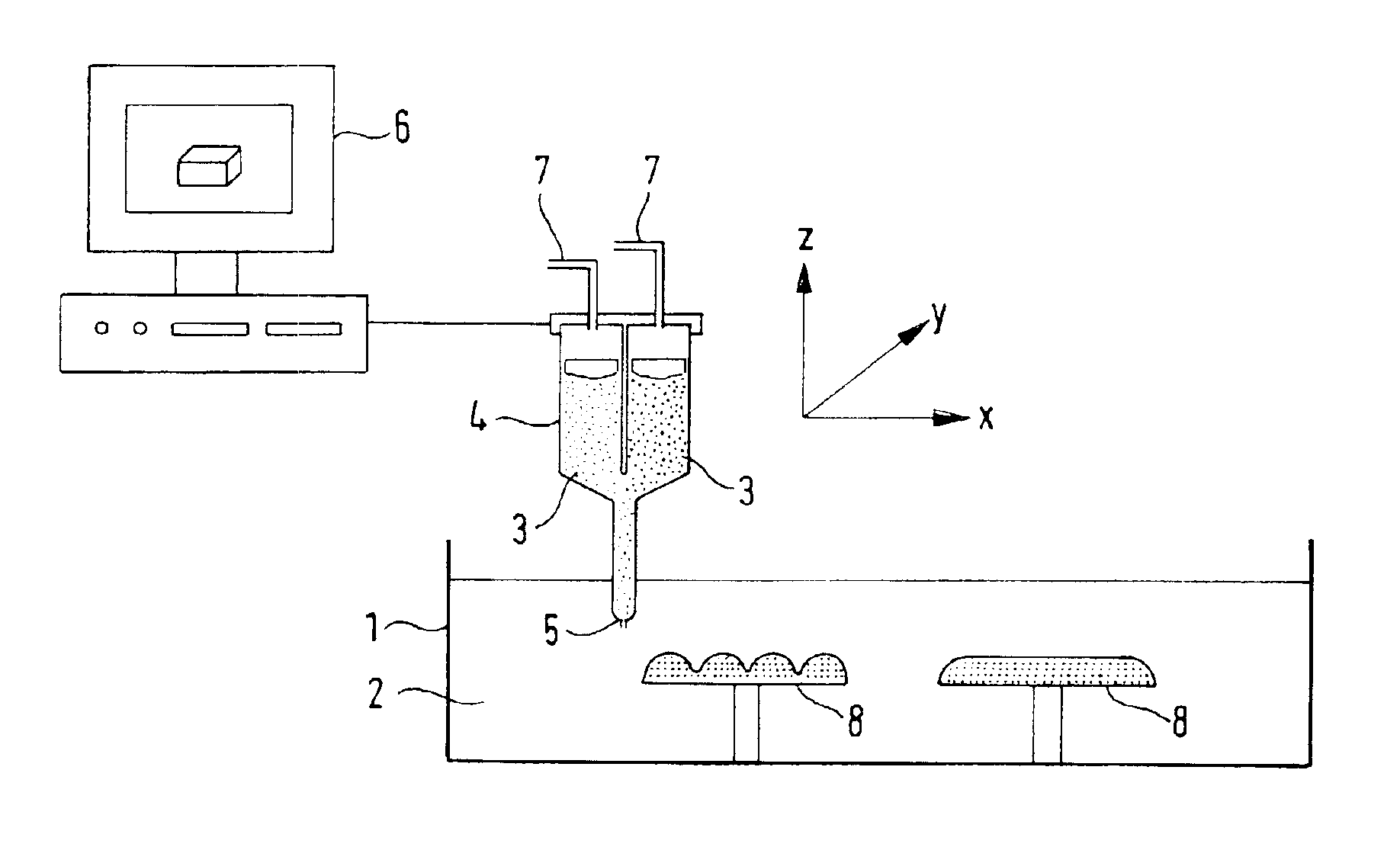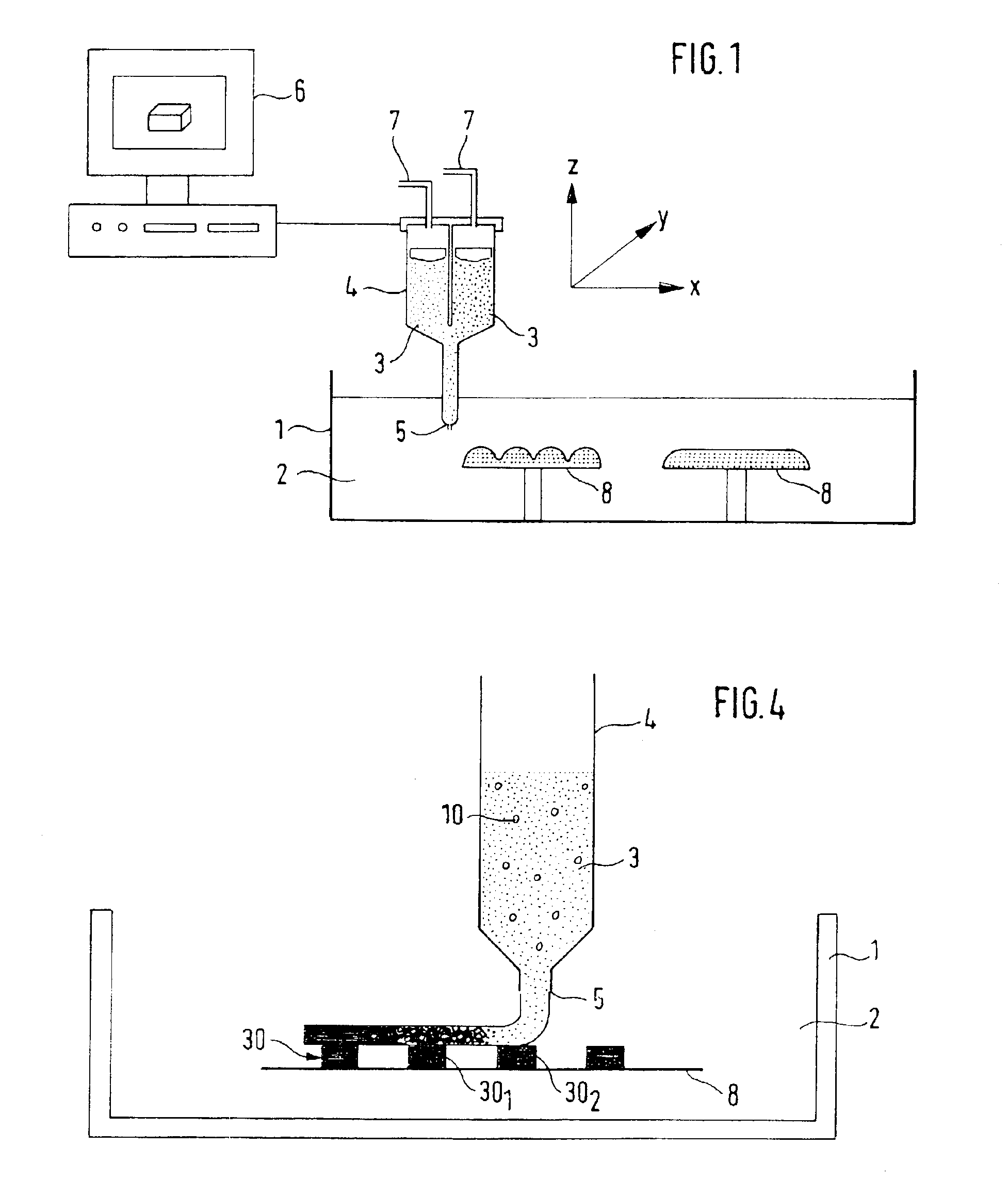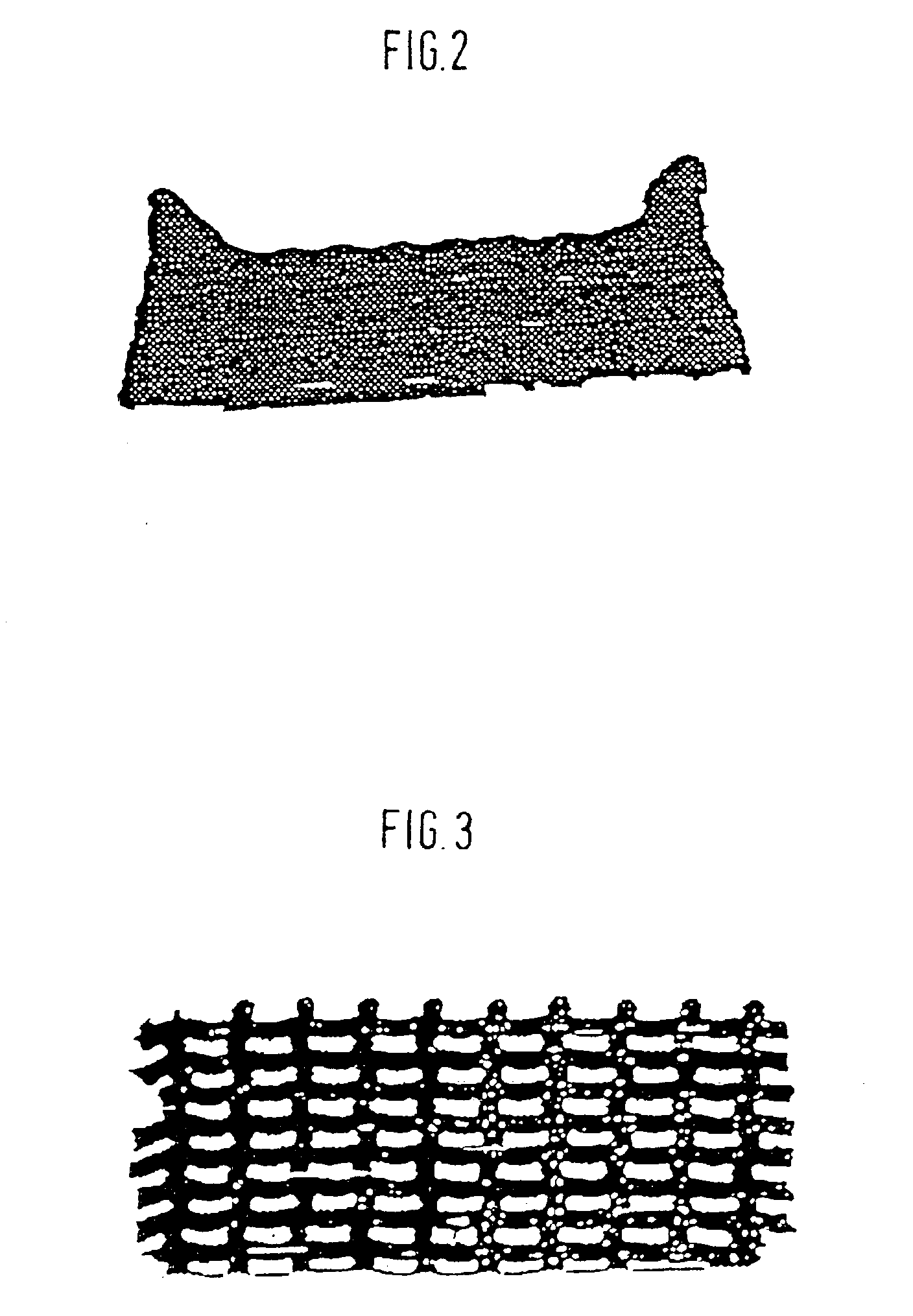Device and method for the production of three-dimensional objects
- Summary
- Abstract
- Description
- Claims
- Application Information
AI Technical Summary
Benefits of technology
Problems solved by technology
Method used
Image
Examples
first embodiment
[0065]The description of a first embodiment of the invention follows.
[0066]A pneumatically operated dispenser 4 of the principle described above is provided with a cartridge and has as outlet opening 5 a needle having an internal diameter of about 250 μm. A metering valve is connected to the pipes 7 via hoses to regulate the pressure within the cartridges. This reduces the compressed air introduced from 7 bar to the necessary cartridge pressure depending on the material (3). In addition, the reducing valve may be completely closed by the control 6, in order to start or to interrupt the metering process.
[0067]In operation, the container 1 is filled with water. A silicone resin, which can be cured using water, is placed into the cartridge of the dispenser 4. Acetoxysilanes, which effect acid-catalysed silanol polycondensation during hydrolysis in the presence of water, are present in the silicone.
[0068]The free needle end is positioned above the platform 8 at a starting position withi...
second embodiment
[0075]In a second embodiment, a dispenser 4 is used which has a heatable needle as outlet opening 5. A plastisol, that is a polymer powder dispersed in one or more plasticisers, is provided as material in a cartridge on the dispenser 4. Water is provided in the container 1. The plastisol becomes gelled within the heated needle immediately before release into the water. The plastisol is cooled in the water and thus solidified. In addition, the plastisol may also be gelled later in an oven in order to improve the structural properties of the three-dimensional object. PU prepolymers with isocyanate and hydroxyl groups are a further example. They are situated in the cartridge 4 at room temperature or slightly cooled and are gelled by heating in the heated needle of the outlet opening 5. Other chemical reactions are also conceivable here, which lead to solidification / gelling and can be started by a short thermal impulse.
third embodiment
[0076]In the third embodiment, a co-reactive system comprising several materials is used. The dispenser 4 is provided with a cartridge and with a needle at the outlet opening 5. A polyurethane having functional isocyanate groups is initially placed in the cartridge. The container 1 is filled with water or an aqueous amine solution. During the addition of the polyurethane there is a reaction with the water or with the aqueous amine solution and curing of the co-reactive system.
[0077]In a modification of this embodiment, the dispenser 4 is provided with two cartridges. A reactive resin is present in the one cartridge and a component for curing the reactive resin is present in the other cartridge. When using mixing nozzles, the substances initially placed in the cartridges are mixed with exclusion of air before or during addition into a plot medium, such as for example water. The reactive resin and the component for curing react with one another with formation of solid three-dimensiona...
PUM
| Property | Measurement | Unit |
|---|---|---|
| Temperature | aaaaa | aaaaa |
| Time | aaaaa | aaaaa |
| Structure | aaaaa | aaaaa |
Abstract
Description
Claims
Application Information
 Login to View More
Login to View More - R&D
- Intellectual Property
- Life Sciences
- Materials
- Tech Scout
- Unparalleled Data Quality
- Higher Quality Content
- 60% Fewer Hallucinations
Browse by: Latest US Patents, China's latest patents, Technical Efficacy Thesaurus, Application Domain, Technology Topic, Popular Technical Reports.
© 2025 PatSnap. All rights reserved.Legal|Privacy policy|Modern Slavery Act Transparency Statement|Sitemap|About US| Contact US: help@patsnap.com



